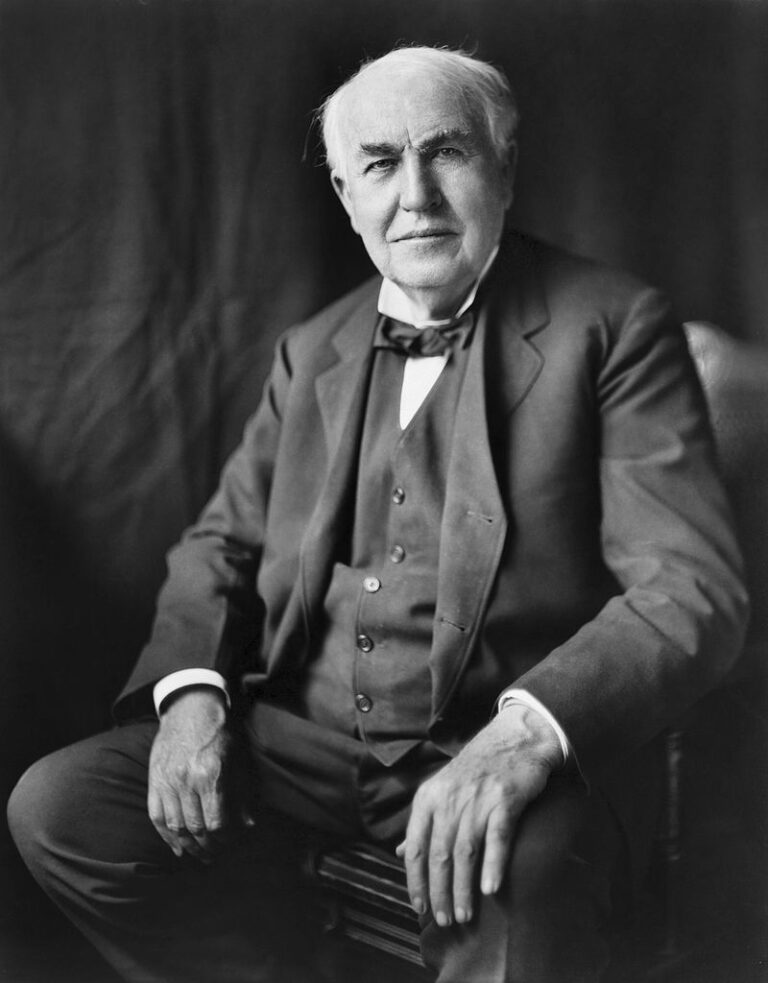Beyond Labels: Embracing Difficulties and Leading with Empathy
Unveiling the Truth: Difficult Doesn’t Mean Bad
Importance of effective leadership in the workplace
Leadership plays a critical role in shaping the success and productivity of any organization. Whether you’re a boss, a teammate, or an employee, your ability to work effectively with others and navigate challenging situations is vital to achieving collective goals. However, one aspect of the workplace dynamic that often creates friction is dealing with individuals labeled as “difficult.”
Common perception of “difficult” bosses, teammates, and employees
We’ve all encountered people who, for various reasons, are deemed difficult to work with. Perhaps they have a different personality that clashes with our own, or they consistently challenge, critique, or disagree with our ideas. It could be something as minor as causing us temporary inconvenience. In many cases, these individuals are not intentionally difficult, but rather, they think differently or have distinct personalities that may clash with our own.
Unfortunately, our tendency is to categorize these individuals as inherently problematic, often without fully understanding or appreciating their unique perspectives. We may label them as difficult to justify our own frustrations or to create a sense of superiority, allowing us to distance ourselves and avoid dealing with the challenges they present. However, this approach fails to recognize their potential value and stifles opportunities for growth and collaboration.
“Difficult” individuals should not be automatically labeled as bad, but rather understood and valued as unique individuals.
In order to foster a more productive and harmonious work environment, it is crucial to challenge our preconceived notions and examine the underlying causes of difficulties. It is essential to differentiate between genuinely toxic behavior and minor disagreements or personality clashes. By shifting our mindset, we can create a space where empathy and understanding prevail, and where every individual’s strengths and perspectives are recognized.
In the following sections, we will explore the nature of difficulties, the power of empathy and understanding, and the role of leadership in effectively managing these challenges. We will delve into strategies for working with difficult bosses, teammates, and employees, emphasizing the importance of treating people as individuals rather than problems. Ultimately, we will highlight the qualities of a great teammate and leader, urging each of us to embrace these roles for the benefit of everyone involved.
The Nature of Difficulties
Recognizing the different sources of difficulties
Difficulties in the workplace can stem from a variety of sources, and it is crucial to understand the underlying factors that contribute to a person being labeled as difficult. One common cause is personality clashes. Each individual possesses a unique set of traits, communication styles, and ways of approaching tasks. When these differences collide, conflicts can arise, leading to strained relationships and a perception of difficulty.
Another source of difficulties is the presence of differing perspectives and ideas. In a diverse workforce, it is natural for people to hold contrasting viewpoints and approaches. These differences can be valuable sources of innovation and creativity, but they can also create tensions and misunderstandings. When a colleague challenges or critiques our ideas, it can be uncomfortable and may contribute to labeling them as difficult, even if their intention is to improve the outcome.
Sometimes, difficulties arise from minor inconveniences or challenges. It could be something as simple as a teammate forgetting to share crucial information or an employee failing to meet a deadline. These instances may cause frustration, but it is important to recognize that such occasional missteps do not necessarily make someone a bad teammate or employee. Often, these are isolated incidents that can be addressed through open communication and understanding.
Furthermore, unresolved insecurities and stresses can impact how individuals show up in the workplace. We all carry personal burdens and pressures that may not be immediately visible to others. When individuals are grappling with their own insecurities or facing external stressors, it can manifest as difficult behavior. Recognizing that these challenges may be affecting someone’s interactions can foster empathy and help build more supportive relationships.
Differentiating between legitimate concerns and toxic behavior
While it is essential to approach difficulties with empathy and understanding, it is equally important to differentiate between legitimate concerns and toxic behavior. Certain behaviors, such as disrespect, toxicity, rudeness, and a lack of integrity, are unequivocally detrimental to the work environment and should not be tolerated. It is crucial to establish clear boundaries and address such behaviors through appropriate channels.
When dealing with difficulties, it is important to evaluate the overall character and behavior of individuals rather than labeling them based on isolated incidents or disagreements. A person can have a difficult moment without necessarily being a difficult person. By recognizing the distinction, we avoid making blanket judgments that may hinder effective collaboration and personal growth.
Challenging the tendency to generalize difficulties
In our quest to simplify complex situations, we often fall into the trap of generalizing difficulties. We may categorize someone as difficult based on a single negative interaction or disagreement, overlooking their other positive qualities and contributions. This tendency can lead to a reductionist view of individuals and prevent us from fully appreciating the richness of diverse perspectives in the workplace.
Instead of hastily labeling someone as difficult, it is crucial to approach each interaction with an open mind and a willingness to understand the context behind their behavior. By challenging our preconceived notions and actively seeking to comprehend the other person’s point of view, we can foster a more inclusive and productive work environment. Remember, nobody wakes up and chooses to be difficult. It is our responsibility to move beyond surface-level judgments and embrace the complexity of human interactions.
The Power of Empathy and Understanding
Cultivating empathy towards difficult individuals
To effectively navigate difficulties in the workplace, cultivating empathy is key. Empathy involves putting ourselves in the shoes of others, seeking to understand their experiences, emotions, and perspectives. When we approach difficult individuals with empathy, we create an environment that promotes understanding, collaboration, and growth.
Acknowledging their unique personalities and perspectives
Every individual brings a distinct set of experiences, values, and beliefs to the table. Recognizing and acknowledging these differences is crucial for developing empathy. Instead of viewing someone as solely difficult, try to understand their unique personality traits and how they may contribute to the challenges you face. By recognizing their strengths and appreciating their individuality, you can foster a more empathetic approach to working with them.
Stepping into their shoes to gain a different perspective
Empathy requires actively imagining ourselves in someone else’s position. Take a moment to consider the factors that might influence their behavior or choices. Reflect on their past experiences, personal challenges, or external pressures that may be contributing to their difficult demeanor. By stepping into their shoes, you can gain valuable insights and develop a more compassionate understanding of their actions.
The impact of unresolved insecurities and stresses
Difficulties in the workplace are often manifestations of deeper issues, such as unresolved insecurities and stresses. Understanding the impact of these underlying factors is crucial for fostering empathy and addressing challenges effectively.
Recognizing how personal issues can affect behavior
Personal insecurities, unresolved conflicts, or struggles in one’s personal life can spill over into professional interactions. It is important to remember that difficult behavior may be a symptom of underlying personal challenges. By recognizing this connection, we can respond with empathy and support, rather than judgment or avoidance.
Promoting a supportive and understanding work environment
Creating a supportive work environment is essential for addressing and mitigating difficulties caused by personal insecurities and stresses. Encourage open communication, where individuals feel comfortable expressing their concerns and seeking assistance. By fostering a culture of understanding and support, you can help individuals navigate their challenges and ultimately contribute more positively to the team.
In summary, empathy and understanding play a transformative role in how we perceive and interact with difficult individuals in the workplace. By recognizing their unique personalities and perspectives, we can develop a more empathetic approach to working with them. Additionally, understanding the impact of personal insecurities and stresses helps us cultivate compassion and create a supportive work environment that promotes growth and collaboration.
Leadership in the Face of Difficulties
Embracing the role of a leader
Leadership is not defined solely by our ability to manage easy situations but by our capacity to lead in the face of difficulties. Whether you are a boss, a teammate in a leadership position, or an employee taking on a leadership role within your own sphere of influence, it is essential to embrace the responsibilities that come with leading diverse individuals.
The responsibility to lead diverse individuals
Leadership is about guiding and inspiring others towards a shared vision or goal. In a diverse workplace, this means recognizing and valuing the unique strengths, perspectives, and contributions of each team member, including those who are labeled as difficult. As a leader, it is your responsibility to create an inclusive and respectful environment that encourages collaboration and growth.
Developing leadership skills through challenging situations
Difficulties provide valuable opportunities for leaders to develop and refine their leadership skills. By embracing these challenges head-on, leaders can enhance their ability to communicate effectively, mediate conflicts, and promote a positive work culture. Leaders who rise to the occasion and navigate difficulties with grace and empathy inspire their teams to do the same.
The danger of avoiding difficult individuals
Avoiding difficult individuals may seem like an easy solution, but it comes with significant drawbacks. When we label someone as difficult and choose to work around them or avoid interactions, we hinder the potential for personal growth and collaboration. Furthermore, avoiding difficulties can lead to a negative cycle where others perceive us as the difficult person they need to avoid.
The consequences of labeling and avoiding others
Labeling someone as difficult and avoiding them creates a barrier that hampers communication and stifles the exchange of ideas. It perpetuates a cycle of misunderstanding and disengagement. By dismissing or avoiding difficult individuals, we miss out on valuable insights, alternative perspectives, and opportunities for personal and professional development.
Becoming the difficult person people avoid
When we consistently label others as difficult and opt to work around them, we risk becoming the very person others avoid. By refusing to engage with individuals who challenge us or think differently, we limit our own growth and hinder our ability to lead effectively. To be an effective leader, it is essential to demonstrate openness, adaptability, and the willingness to learn from diverse individuals.
Strategies for working with difficult bosses, teammates, and employees
Navigating difficulties in the workplace requires proactive strategies for working effectively with difficult individuals. By employing these strategies, leaders can foster understanding, promote collaboration, and create a more harmonious work environment.
Open and honest communication
Establishing open and honest lines of communication is essential for addressing difficulties. Encourage a culture of transparent dialogue, where team members can express their concerns, share differing perspectives, and provide constructive feedback. By fostering an environment of psychological safety, leaders can build trust and encourage open communication.
Active listening and seeking to understand
Listening actively and empathetically is a powerful tool for resolving conflicts and understanding the perspectives of difficult individuals. Take the time to actively listen to their concerns, without judgment or defensiveness. Seek to understand their motivations, values, and underlying reasons for their behavior. By showing genuine interest and empathy, leaders can bridge the gap and find common ground.
Finding common ground and shared goals
Identify shared goals and values that unite team members, including those who may be labeled as difficult. By focusing on common objectives, leaders can help align diverse perspectives towards a collective purpose. Building a sense of shared purpose fosters collaboration and helps individuals see beyond their differences.
Offering support and constructive feedback
Difficulties can often stem from a lack of support or clarity. As a leader, provide the necessary support and resources to help individuals overcome challenges. Offer constructive feedback that highlights areas for improvement while also recognizing their strengths. By providing guidance and encouragement, leaders can empower difficult individuals to grow and contribute positively to the team.
In summary, leaders must embrace their role in navigating difficulties. By recognizing the drawbacks of avoiding difficult individuals and adopting strategies that promote understanding and collaboration, leaders can cultivate a culture of inclusivity, empathy, and personal growth.
Treating People as People
Recognizing the humanity in bosses, teammates, and employees
In the workplace, it is essential to acknowledge and appreciate the inherent humanity of every individual, regardless of their role or perceived difficulties. When we treat people as people rather than problems to be solved, we create an environment that fosters respect, empathy, and collaboration.
Shifting the focus from problems to people
Instead of fixating on the difficulties posed by individuals, we must shift our focus towards understanding and valuing them as unique human beings. By recognizing their aspirations, emotions, and struggles, we can build stronger connections and cultivate a more compassionate work environment. By seeing beyond their challenging behaviors, we open ourselves up to deeper understanding and growth.
The importance of respect and dignity in the workplace
Respect and dignity are fundamental values that should be upheld in any professional setting. By treating every individual with respect, regardless of their difficult tendencies, we create an atmosphere of inclusivity and fairness. Respecting the inherent worth of each person cultivates a sense of belonging and encourages them to contribute their best.
Leadership and teamwork beyond personal preferences
Leadership and teamwork require us to transcend our personal preferences and biases. When we limit ourselves to working only with those who think and act like us, we miss out on the richness that diverse perspectives bring. It is through collaboration with individuals who may be deemed difficult that we have the opportunity to grow as leaders and create innovative solutions.
Overcoming personal biases and preferences
Recognizing our own biases and preferences is the first step towards overcoming them. As leaders, it is crucial to challenge ourselves to embrace diversity and actively seek out differing viewpoints. By consciously stepping outside our comfort zones, we can expand our horizons, learn from others, and develop a broader understanding of the world.
Building strong relationships based on mutual respect
Effective leadership and teamwork thrive on strong relationships built upon mutual respect and trust. By treating difficult individuals with respect, even when faced with challenges, we create an atmosphere of psychological safety. When people feel valued and respected, they are more likely to engage in open communication, share their insights, and collaborate effectively towards shared goals.
Leveraging the strengths of diverse individuals
Each person brings a unique set of strengths and skills to the table, even if they may exhibit difficult behaviors. As leaders, it is our responsibility to recognize and leverage these strengths. By focusing on the positive contributions that difficult individuals can make, we create an environment that encourages growth, creativity, and high-performance.
Embracing the responsibilities of a great teammate and leader
To foster a culture of treating people as people, we must embody the qualities of a great teammate and leader. By leading by example and setting the tone, we create a ripple effect that influences others to do the same.
Embodying the qualities of a great teammate
Being a great teammate involves actively supporting and uplifting others. It means offering assistance, showing empathy, and being a reliable source of guidance. By embodying these qualities, we foster a sense of camaraderie and collaboration, encouraging others to treat their colleagues with the same level of respect and support.
Embracing the responsibilities of a great leader
As leaders, we have the power to shape the culture of our teams and organizations. By embracing the responsibilities of a great leader, we create an environment where everyone feels valued and included. This means nurturing a positive and inclusive work environment, fostering growth and development, and empowering individuals to reach their full potential.
By recognizing the humanity in bosses, teammates, and employees, we can create a workplace where every individual is treated with respect and dignity. Embracing diversity, overcoming biases, and valuing differing perspectives are essential for effective leadership and building a thriving work culture. By prioritizing the responsibilities of a great leader, such as nurturing a positive and inclusive environment, promoting growth and development, and empowering individuals, we create an atmosphere where everyone feels valued and included.
Being a Great Teammate and Leader
Embodying the qualities of a great teammate
Being a great teammate goes beyond individual performance; it involves actively contributing to a positive and collaborative work environment. When we prioritize being a supportive and reliable presence for others, we create a foundation for effective teamwork and mutual growth.
Collaboration and cooperation
Great teammates prioritize collaboration over competition. They understand that by working together and leveraging each other’s strengths, they can achieve better outcomes. They actively seek opportunities to collaborate, share ideas, and find common ground. Embracing a mindset of cooperation fosters a culture where difficulties are approached collectively and resolved with empathy and understanding.
Supporting and uplifting others
A key aspect of being a great teammate is providing support and encouragement to others. Celebrating their successes, offering assistance when needed, and providing constructive feedback are all essential elements of support. By lifting others up and recognizing their contributions, we create an environment where individuals feel valued and motivated to excel.
Embracing the responsibilities of a great leader
Leadership is not confined to those in formal managerial positions. Anyone can demonstrate leadership qualities by taking ownership of their actions and inspiring others to do the same. Great leaders understand the influence they have on those around them and use it to create a positive and inclusive work environment.
Inspiring and motivating others
A great leader inspires and motivates their team members to reach their full potential. They lead by example, demonstrating passion, integrity, and a strong work ethic. By setting high standards and providing a clear vision, leaders create a sense of purpose that drives individuals to go above and beyond.
Nurturing a positive and inclusive work environment
Great leaders prioritize creating a positive and inclusive work environment where everyone feels heard and valued. They promote open communication, actively listen to their team members’ concerns, and address conflicts promptly and fairly. By fostering an environment of psychological safety, leaders encourage individuals to express their ideas and perspectives without fear of judgment or retribution.
Empowering individuals to grow
A crucial aspect of leadership is empowering individuals to grow both personally and professionally. Great leaders recognize the unique strengths and potential of each team member and provide them with opportunities to develop and succeed. They invest in their team’s growth through mentorship, training programs, and constructive feedback, fostering a culture of continuous improvement.
By embodying the qualities of a great teammate and leader, we create an environment that values individuals for who they are and nurtures their potential. Whether we hold a formal leadership position or not, we all have the power to positively impact those around us.
Being a great teammate and leader involves collaboration, support, inspiration, and empowerment. By embracing these responsibilities, we contribute to a workplace where everyone is treated as a valuable individual, difficulties are approached with empathy and understanding, and the collective potential of the team is maximized.
Unlocking Potential: Becoming Great Teammates and Leaders
Throughout this article, we have explored the concept of dealing with difficult bosses, teammates, and employees. We began by acknowledging that difficulties in the workplace are often a result of personality clashes, differing perspectives, minor inconveniences, or unresolved insecurities and stresses. It is important to differentiate between legitimate concerns and toxic behavior while challenging the tendency to generalize difficulties.
We then delved into the power of empathy and understanding, emphasizing the need to cultivate empathy towards difficult individuals by recognizing their unique personalities, stepping into their shoes, and understanding the impact of their unresolved insecurities and stresses. We highlighted the role of leadership in navigating difficulties, including the responsibility to lead diverse individuals and the danger of avoiding difficult individuals. Strategies for working with difficult individuals were discussed, such as open and honest communication, active listening, finding common ground, and offering support and constructive feedback.
Furthermore, we explored the significance of treating bosses, teammates, and employees as people rather than problems. By shifting our focus from problems to people and recognizing the importance of respect and dignity in the workplace, we create an environment that values individuals and promotes collaboration. We also discussed the need to overcome personal biases and preferences, leveraging the strengths of diverse individuals, and embracing the responsibilities of being a great teammate and leader.
Importance of being a great teammate and leader for everyone
In today’s diverse and dynamic workplaces, being a great teammate and leader is more important than ever. It requires us to move beyond labeling and avoidance and to treat individuals with empathy, respect, and understanding. By doing so, we foster an environment that encourages growth, collaboration, and innovation.
Leadership is not about seeking only the easy paths or working with people who think and act like us. It is about embracing the challenges posed by difficult individuals and using those situations as opportunities for personal and professional development. When we treat others as people, we create a culture where everyone feels valued, understood, and empowered to contribute their best.
Furthermore, being a great teammate extends beyond personal preferences and biases. It means recognizing and appreciating the unique strengths and perspectives that each individual brings to the table. By embracing diversity, actively collaborating, and providing support and upliftment, we foster a sense of unity and create a work environment where everyone can thrive.
Be a great teammate and leader
As we conclude, I urge you to reflect on your own approach to difficult individuals in the workplace. Are you labeling and avoiding them, or are you seeking to understand and support them? Recognize that difficulties can be opportunities for growth and learning, both for yourself and for others.
Commit to being a great teammate and leader by embodying the qualities discussed in this article. Foster empathy, embrace diversity, communicate openly, and provide support and encouragement. By doing so, you will contribute to a work environment that values individuals, promotes collaboration, and achieves exceptional results.
Remember, difficult individuals are not inherently bad bosses, teammates, or employees. They are people with their own unique perspectives and challenges. By treating them as such, you demonstrate true leadership and create a workplace where everyone can thrive.
In conclusion, let us strive to be great teammates and leaders for everyone, regardless of their perceived difficulties. Together, we can build a more inclusive, supportive, and successful work environment.







